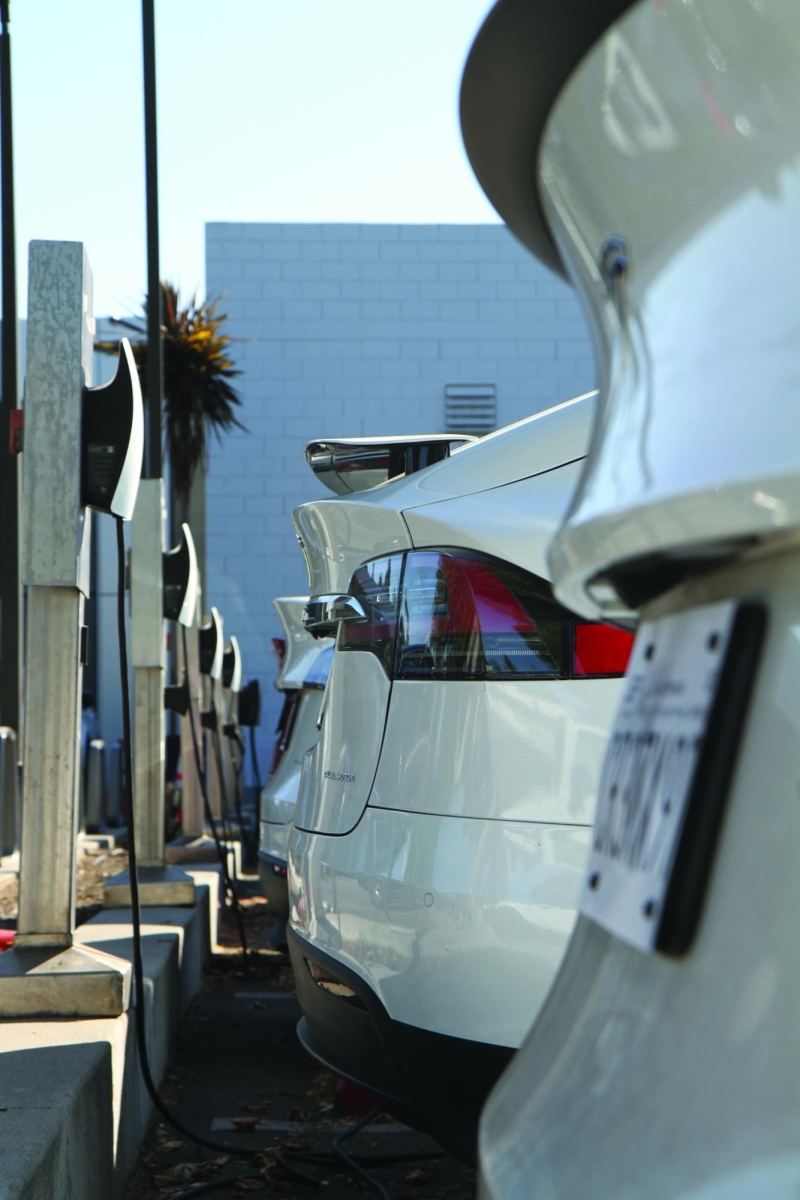Five p.m.: The lights begin to flicker. My hands fly to my laptop, rushing to send one last message as the power begins to go out. I am glad I was able to get some work done, but there’s no telling how long the outage might last. This is a routine that has become all too familiar.
Full electrification of homes, businesses and vehicles has become popular among California citizens. Up to 20% of California homes are fully electric as of 2022 according to the U.S. Energy Information Administration. But the frequent loss of power prompts one question that the community must ask itself: Are we ready to go all-in with electrification?
The City of Palo Alto has committed to fully electrifying homes, businesses and cars by 2030. While electric energy can be a great way to limit emission waste, there is one major issue we must tackle before prompting such a major change in our community: Fixing our infrastructure.
Across California, existing infrastructure is struggling to provide reliable energy. Heat waves and grid overloads have proven capable of bringing our electric systems to the brink of collapse, and even with the assistance of scheduled blackouts, thousands of Californians are still left without power for hours. Just last September, about 35,700 residents in Silicon Valley on at least one occasion were left without access to heat, water, or plumbing, according to CNBC. This pattern has become increasingly evident in recent years, with grid operators shutting down electric grids more than 50,000 times last year, affecting 51 million customers according to Bloom Energy. None of the shutdowns were for Public Safety Power Shutdown (PSPS) purposes, such as wildfire prevention according to a 2022 report released by PG&E.
In fact, California currently imports energy from neighboring states, according to an article from Reuters. To meet increasing demands, California needs to achieve energy independence. We shouldn’t have to rely on other states in order to keep our own running. If the goal is to go full electric, the utilities departments must put sufficient infrastructure in place first so that people won’t have to worry about frequent outages.
According to Assistant Director Jonathan Abendschein from Palo Alto Utilities, Palo Alto’s Sustainability and Climate Action Plan proposes widespread grid modernization and investment in technology to improve grid reliability.
“It [the plan] is replacing aging infrastructure,” Abendschein said. “It’s making investments in technologies and grid configurations that improve our reliability in the future, and it’s going to systematically increase our grid capacity in places where we need it.”
Still, the transition to full electrification will not be an easy one. Abendschein estimates that improving Palo Alto’s grid capacity will cost hundreds of millions of dollars. Implementing full electricity across California will likely cost even more.
Transportation is another system that will be heavily impacted by the push to achieve full electrification. Proposals such as California’s recent Advanced Clean Cars II rule, with a goal to only have zero-emission cars sold in the state by 2035, will require a reliable grid system.
How can the community expect the grid to support the increased load from charging so many electric vehicles if our current grids can’t even handle the increasing presence of severe heat waves? One example was the Flex Alerts issued during September 2022, which encouraged Californians to conserve power in order to avoid grid shutdown according to NBC.
The cost of full electricity will also be primarily felt by the people. A study conducted by EnergySage found that the average Californian already pays 33% more in electric bills than the national average. With the additional load required for electrification by 2030, everyone will see increased bills because the costs of heavy electrical improvements will be passed onto us. To keep electric energy a viable and appealing option, the government needs to recondition our infrastructure so that people are supported while the transition to full electricity is being made.
Clean electric energy is the future. Still, it’s important to pay just as much attention to updating our infrastructure as it is to begin the transition to full electrification. I implore Californians and our state legislature to reconsider current electrification goals before adopting full electrification so that the community will have a stronger and more reliable system for the future.




